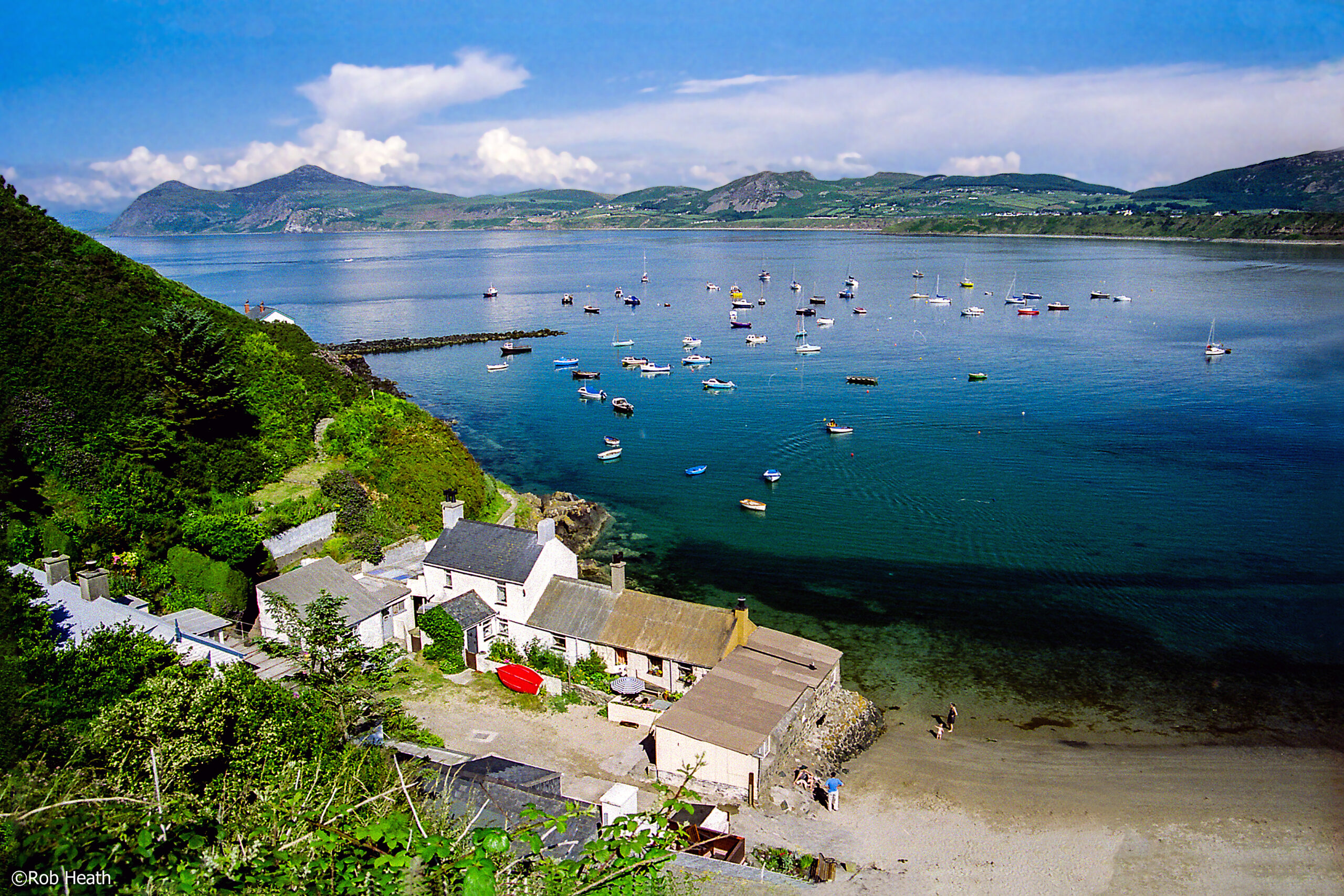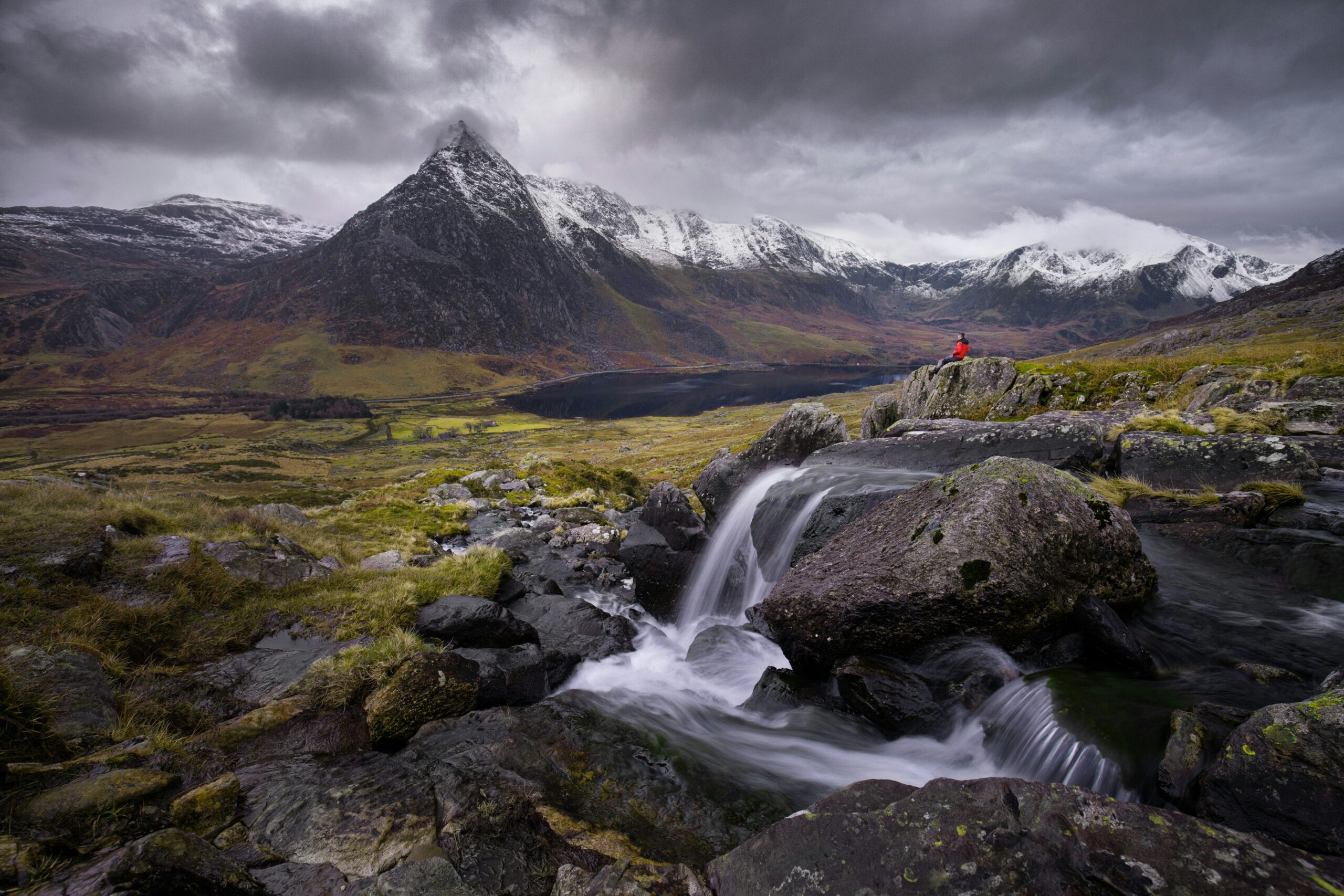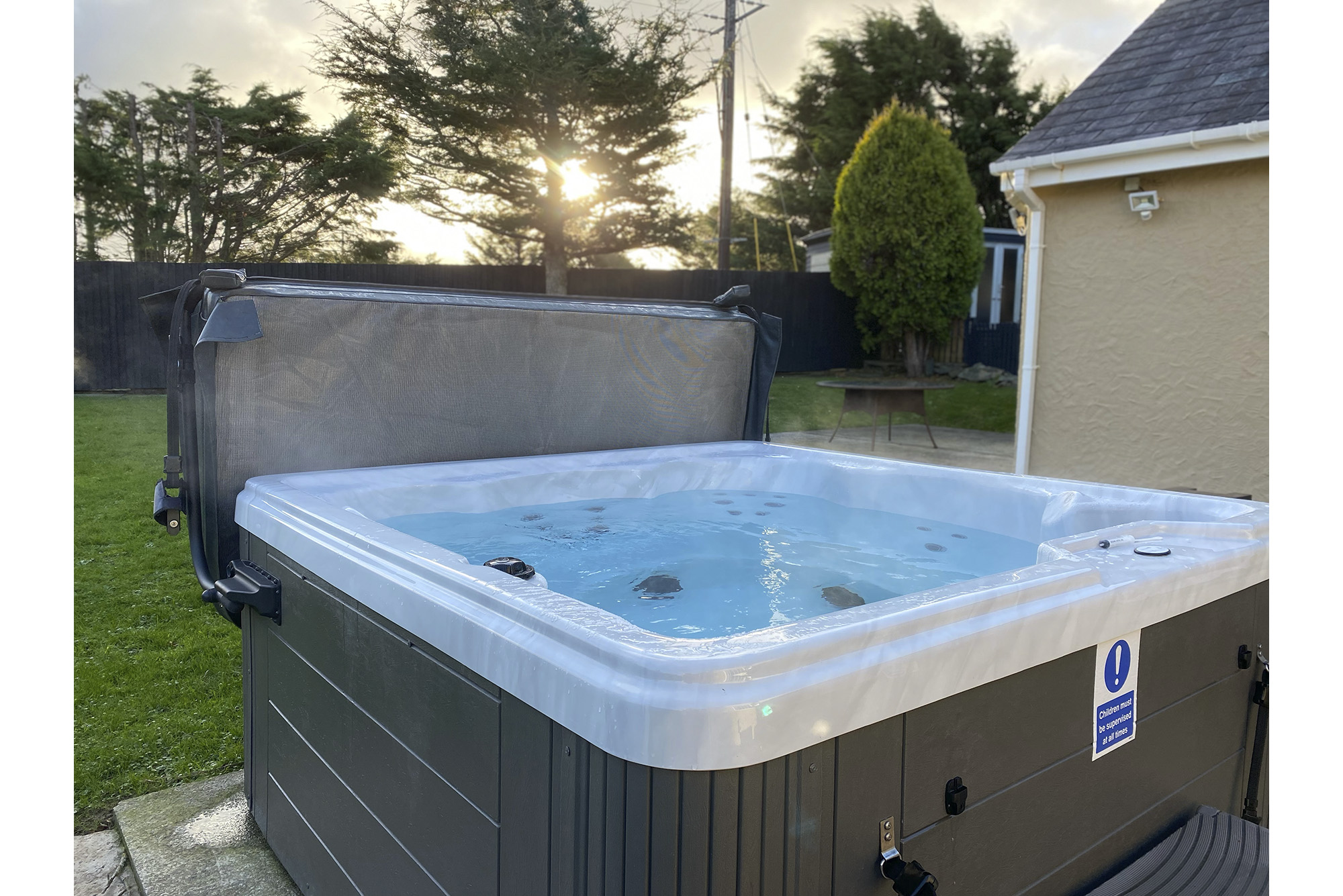5 Castles you need to visit in North Wales!
Wales is home to so many castles that you could go to one every day for a year and yet not see them all! It is referred to as the “castle capital of the world” since it contains more castles per square mile than any other country in Europe.
Along with its mountains, of course, North Wales is famed for its castles. They come in a wide variety of forms and dimensions. Some structures were created just for pleasure, while many were fortifications meant to guard the hotly contested areas.
Caernarfon Castle
Location: Caernarfon town centre, Gwynedd
Adult: £11.10
Family: £36.60
Disabled person and companion: Free
Juniors (Aged 5-17) / NUS / Armed Forces and Veterans: £7.80
Seniors (Aged 65+) : £10.60
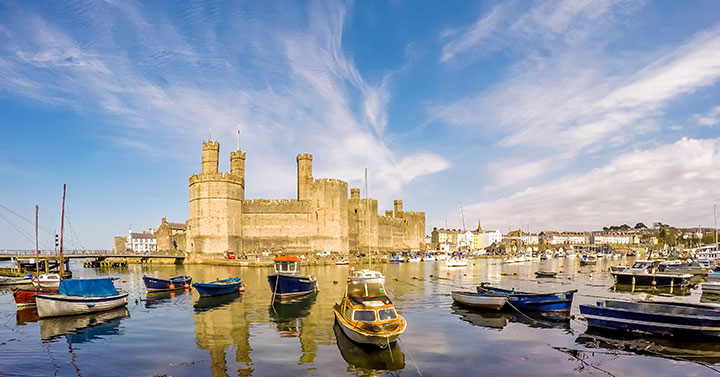
Royal fortress-palace built on legends and bitter medieval conflicts through the ages
One of the grandest structures from the Middle Ages is acknowledged as being Caernarfon Castle.
This castle-fortress on the River Seiont is part of a World Heritage Site together with castles built by Edward I in Conwy, Beaumaris, and Harlech. Caernarfon, though, stands apart for its sheer size and dramatic architecture.
Here, Edward and Master James of St. George, his military architect, simultaneously built a castle, town walls, and a dock. This enormous construction project ultimately took 47 years and cost an astounding £25,000.
A bitter conflict with Welsh princes gave rise to the castle. Naturally, its massive curtain walls and intimidating King’s Gate were built to withstand any attack. However, the message was more subtly conveyed by the polygonal towers, eagle statues, and colourful masonry.
These were particularly reminiscent of the walls of Constantinople and imperial Roman architecture. They also thought of the Welsh legend of Macsen Wledig, who had a dream of a massive fort at a river’s mouth that was ” the fairest that man ever saw”
So, Caernarfon is a dream castle for some. A legend is realised. It still captures the imagination like no other Welsh castle even after 700 years.
More: https://britishcastle.co.uk/caernarfon-castle/
Conwy Castle
Location: Conwy town
Adult: £11.10
Family: £36.60
Disabled person and companion: Free
Juniors (Aged 5-17) / NUS / Armed Forces and Veterans: £7.80
Seniors (Aged 65+): £10.60
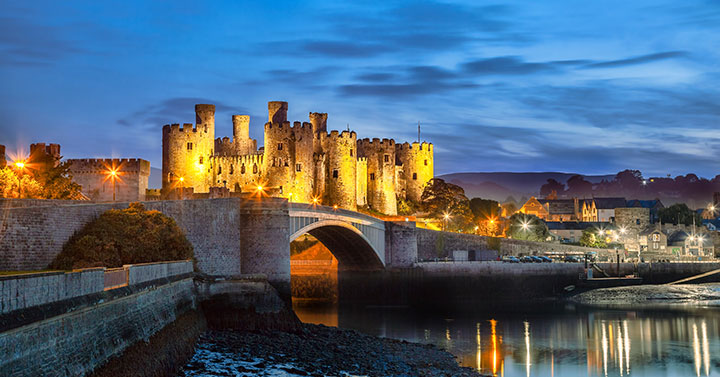
A fantastic medieval fortress that still towers over the town even after 700 years
Conwy Castle’s main towers include refurbished spiral stairs that allow visitors to make a full circle of the battlements. We heartily endorse it. One of the most gorgeous mediaeval fortifications in all of Europe is this one.
While the Snowdonia mountains rise in the background, the 1,400-yard (1.3km) ring of town walls that surround Conwy still serves as protection for its harbour and winding alleyways.
This epic place will take your breath away. Especially when you take into account that the walls and fortress were constructed by King Edward I and his architect Master James of St. George in the improbable span of four years between 1283 and 1287, now that is quick castle building.
Conwy joins the ranks of Edward’s other magnificent castles, including those at Beaumaris, Harlech, and Caernarfon, as a UNESCO World Heritage Site.
This renowned fortification has been preserved remarkably well. It has Wales’ largest collection of surviving mediaeval royal rooms. The eight lofty towers and high curtain wall stand almost as majestically now as they did more than 700 years ago.
So, if you can, don’t be scared to walk those stairs to get the whole Conwy experience. In all of Britain, there isn’t a better site to stand on the battlements and daydream about what used to go on here.
More: https://britishcastle.co.uk/conwy-castle/
Beaumaris Castle
Location: Beaumaris town, Anglesey
Adult: £8.30
Family; £27.40
Disabled and companion: Free
Juniors (Aged 5-17) / NUS / Armed Forces and Veterans: £5.80
Seniors (Aged 65+): £7.70
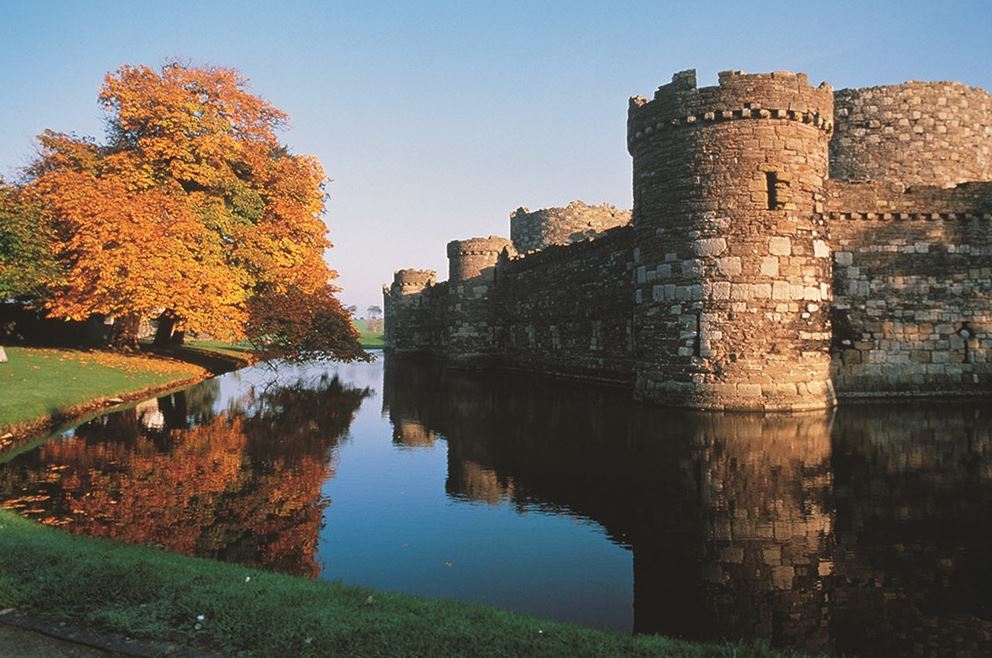
Fortress of almost-perfect symmetry is an unfinished masterpiece
It is known for being the grandest castle that was never built is Beaumaris, located on the island of Anglesey. It was the final fortress Edward I built in Wales and may have been his finest work.
Here, Edward and James of St. George made the most of a blank slate: the “beau mareys” or “beautiful marsh” next to the Menai Strait. They had already begun building Conwy, Caernarfon, and Harlech, three enormous fortresses. The castle to end all castles was to be their shining achievement.
The outcome was a massive fortification with almost perfect symmetry. There were no fewer than four concentric rings of strong defences, each with its own pier and a watery moat. There were 300 arrow loops alone on the exterior walls.
But by the 1320s, construction had slowed down due to a shortage of funding and unrest that had been brewing in Scotland. The inner ward’s six large towers and the south gatehouse were never able to reach their full height. Just being started, the Llanfaes gate was abandoned.
Therefore, Beaumaris’ characteristic squat shape testifies of a dream that was only partially realised. However, as a component of the Castles and Town Walls of Edward I World Heritage Site, it occupies its proper position on the global stage.
Because of the scope of its ambition and the elegance of its proportions, this castle is unique. The gloriously unfinished Beaumaris is possibly the pinnacle of the greatest military architect of all time.
More: https://www.beaumaris.com/
Gwrych Castle
Location: Abergele, Conwy
Adult ticket: £10.00 adult
Child ticket (3-15): £5.00 child
Concession: £8.00 adult
Family ticket: £30.00 family
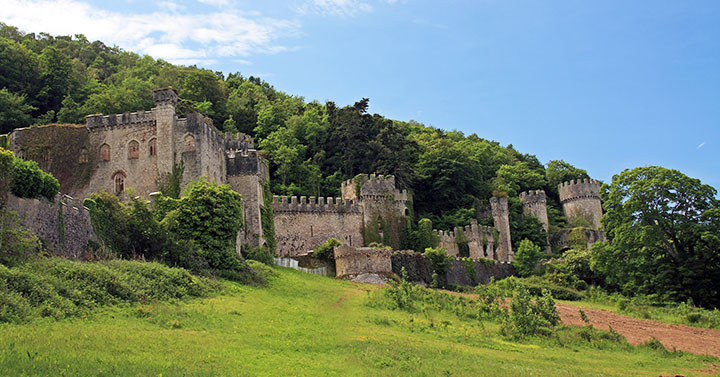
The Stuff of Legends
According to local legend, the Normans erected the first fortress at Gwrych in the 12th century. Around 1170, the Welsh prince Rhys ap Gruffydd, also known as the Lord Rhys of Deheubarth, took control of it and rebuilt the wooden castle in stone. After the English Civil War of the mid-17th century, Cromwell’s forces later demolished this castle.
In Gwrych, the later castle was started in 1819. A Grade 1 listed structure, the castle is perched on a hillside with a view of the Irish Sea. Rich businessman Lloyd Hesketh constructed it as the continent’s first Gothic folly. In his early 20s, Bamford Hesketh, his son, received the Gwrych title and utilised his enormous wealth to create the 4,000-acre Gwrych Castle Estate.
The castle previously contained 128 rooms, including 28 bedrooms, two smoke rooms, an inner hall, an outer hall, a dining room, a drawing room, a billiards room, an oak study, and a variety of servants’ quarters. The facade is more than 2000 yards long and has 19 contested towers. The castle’s 52-step marble staircase is regarded by many as its most notable feature.
One of the first attempts to imitate authentic mediaeval architecture in Europe was made at Gwrych Castle, a Grade I listed country house in North Wales. The trust has been working tirelessly to save the castle and estate for more than 20 years, and they are dedicated to ensuring the property’s long-term viability.
You might be familiar with Gwrych Castle because it served as the location for two years in a row for ITV’s I’m A Celebrity… Get Me Out of Here! The famed phone box, privy, and The Clink from the previous season have all been preserved for the enjoyment of real I’m A Celebrity fans!
More: https://www.gwrychcastle.co.uk/
Harlech Castle
Location: Harlech town, Gwynedd
Adult: £8.30
Family: £27.40
Disabled person and companion: Free
Juniors (Aged 5-17) / NUS / Armed Forces and Veterans: £5.80
Seniors (Aged 65+): £7.70
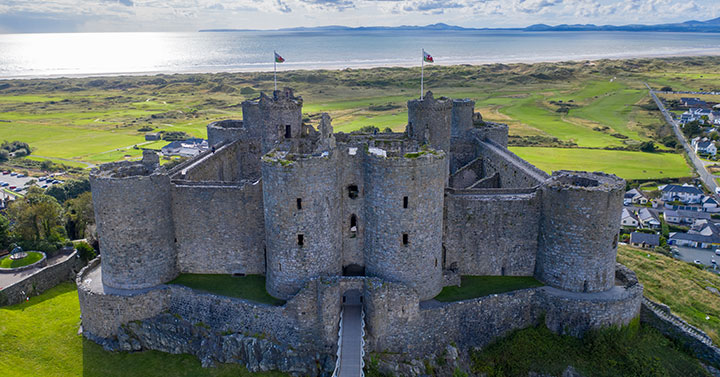
None of Edward I’s great coastal fortresses has a more intense breath-taking setting
Harlech Castle perches atop a sheer rocky crag with views of the distant dunes. Snowdonia’s rocky peaks loom in the background. This is undoubtedly the most spectacular setting for any of Edward I’s castles in North Wales, competing with Conwy, Caernarfon, and Beaumaris. They are all recognised as UNESCO World Heritage Sites.
Under the direction of the talented architect Master James of St. George, Harlech was finished from the foundation to the battlements in just 7 years. The traditional “walls within walls” construction makes the most of the formidable natural defences.
Thanks to the “Way from the Sea,” the fortress managed to survive even when fully cut off by Madog ap Llewelyn’s uprising, he was the leader of the Welsh revolt of 1294–95 against English. The 108 stairs that rose sharply up the rock face allowed food and water to be delivered by ship to the besieged defenders.
Today, it is simpler to defeat Harlech. For the first time in 600 years, you can access this magnificent castle using an amazing “floating” footbridge, just as Master James had intended.
More: https://www.harlech.com/

